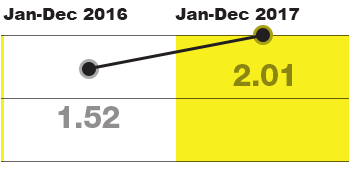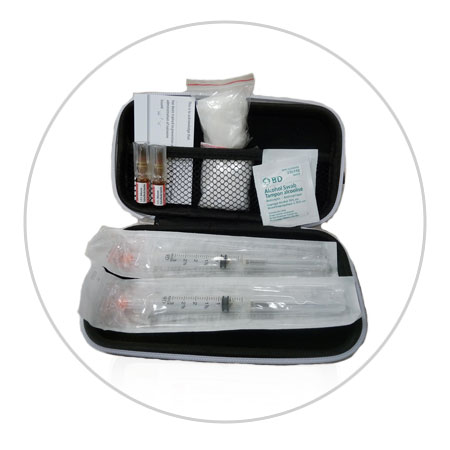Coping With a Deadly Public Menace: Opioid Overdoses
"Data imply some saving of auto occupants' lives at the expense of more pedestrian deaths and more nonfatal accidents: 'The Effects of Automobile Safety Regulation'."
Sam Peltzman, economist, University of Chicago, 1975
"We find that broadening Naloxone access led to more opioid-related emergency room visits and more opioid-related theft, with no reduction in opioid-related mortality."
"Our findings do not necessarily imply that we should stop making Naloxone available to individuals suffering from opioid addiction, or those who are at risk of overdose. They do imply that the public health community should acknowledge and prepare for the behavioural effects we find here."
Researchers Jennifer Doleac and Anita Mukherjee, professor, Wisconsin School of Business
"Patients occasionally tell me that having naloxone on hand has served as insurance against overdose. So, in some instances, it enhances risk-taking."
"That said, we must use it to save people in the immediate term."
Sally Satel, psychiatrist, drug-policy scholar, American Enterprise Institute
 |
Naloxone is a medication that quickly reverses the effects of an
overdose from opioids such as heroin, methadone, fentanyl and morphine.
It is available in without a prescription and often given as an
injection into a muscle. |
Governments, in the 1960s, appalled by the growing carnage on highways related to drivers' inattention to driving safety coupled with automobile manufacturers' disinterest in building safety features into their products, began to press those same automakers to begin looking at investing in safety technologies to be built into their cars and trucks in an effort to make vehicles safer to drive. It has often been observed that drivers, instead of honing their driving skills with a view to driving more safely, simply became more reckless with the new assurances of safety built into their vehicles.
This had the perverse effect of saving the lives of drivers, but sacrificing the lives of pedestrians. Safety features in vehicles produced the desired result in reducing driver deaths due to the new regulations, but the tendency of drivers to drive with increased recklessness had its unanticipated costs. When locomotives were killing cattle straying onto train tracks, farmers were dismayed and angered by their financial losses. A cage-type device called a cow-catcher was attached to train engines that would scoop up the stray cow, not kill it. Imagine designing a passenger vehicle with a similar device and how popular that would be with consumers.
Drivers who feel it is their entitled right to drink and drive, drive while impaired by drugs, or impair their driving skills by diverting their attention to ubiquitous cellphones don't so much endanger their own lives as they do the lives of other drivers and pedestrians through inexcusable habit unconstrained by either conscience or consequences. In these instances far more severe penalties for flouting the law should be imposed in recognition of the fact that people who behave in this way have no regard whatever for the safety and security of others.
The drug overdose scenario that now haunts North America with the growing use of dangerous opioids, the appearance of powerful drugs like fentany and carfentanil and the penchant of drug dealers using these inexpensive, readily-available more powerful opiates as fillers with other drugs so that people often have no idea what they're using, ending up with drug overdoses, has led public health agencies to recognize the need to have the opioid-antagonist naloxone readily available to reverse a deadly overdose.
 Overdose deaths per day in Alberta ... Source: Alberta Health, Opioids and Substances of Misuse, Alberta Report, 2017 Q4
Overdose deaths per day in Alberta ... Source: Alberta Health, Opioids and Substances of Misuse, Alberta Report, 2017 Q4The very same kind of human reaction has been recognized linked with opioid overdose rescues with naloxone. Users of fentanyl and other similar drugs have developed a degree of confidence in knowing that naloxone is in the possession of a wide range of emergency responders; health workers, firemen, police, even librarians and relatives and friends of those known to be drug-addicted to enable them to respond with an overdose antidote. That confidence has led them to relax their own vigil against overdose; in other words choosing to continue endangering themselves.
Of course, in making that choice it is they alone who after a series of overdoses successfully treated with naloxone, stand a good chance of not surviving another and last one. They are, in the final analysis, harming themselves. They pose no threat to anyone else, other than leaving bereaved relatives suffering, deprived of the presence of a loved one. It simply is not morally feasible to withdraw that support from those reckless enough to keep gambling with their lives, caught in the spiral of their unappeasable addiction.
For a lot of people, it is difficult-to-impossible to ignore the pleas of homeless people, begging for 'spare change'. Some of that 'spare change' will be used for the acquisition of drugs or alcohol. These are people living desperate, dysfunctional and dangerous lives. If a cash pittance from those whose lives are so completely dissimilar can bring a little relief into such dismal lives why not dispense whatever help one can? Moralizing simply results in smoothing balm on one's own conscience.
Until such time as governmental social services are capable of extending useful programs to assist addicts to shed their habits, as well as setting aside the needed funds to provide decent housing to those living rough on the streets in wasted lives, wasted tax dollars on emergency relief, hospital services, police responses, these issues plaguing societies and laying waste to peoples' lives will not be resolved.
A fentanyl overdose will result in several characteristic physical symptoms. These symptoms will be easily observed by those who know what to look for, and include:3,4,5
- Confusion.
- Dizziness.
- Difficulty thinking, speaking, or walking.
- Pale face.
- Blue- or purple-colored lips, fingernails, or extremities.
- Throwing up.
- Choking sounds.
- Pinpoint pupils (pupil size reduced to small black circles in middle of eyes).
- Seizures.
- Low blood pressure.
- Slowed heart rate.
- Excessive drowsiness.
- Frequent fainting spells (nodding off).
- Limp body.
- Unresponsive.
- Coma.
- Difficulty breathing.
- Hypoventilation (slow, shallow breathing).
- Respiratory arrest.
- Death.
What’s in a naloxone kit
 |
| Province of Ontario |
Injectable kits
Each injectable naloxone kit includes:
- 1 hard case
- 2 (0.4 mg/1 ml) vials or ampoules (a small glass container) of naloxone
- 2 safety-engineered syringes with 25g, 1” needles attached
- 2 devices (known as “breakers,” "snappers,” or “openers”) for opening ampoules safely
- 1 pair of non-latex gloves
- 1 card that identifies the person who is trained to give the naloxone


0 Comments:
Post a Comment
<< Home